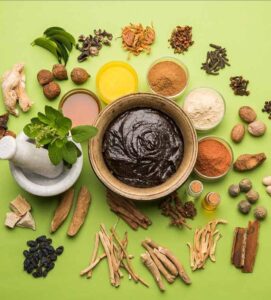What is better for health millet or wheat and rice?
Here is a brief comparison between all three!

Millet V/S Wheat and Rice.
Millet contains much higher fiber and essential minerals than wheat, rice, and other cereal grains.
Broken wheat, oats, unpolished rice, and wheat-based bread are healthier options than semolina (suji, Rawa), white rice, and white bread. They also contain good quality protein with a high content of essential amino acids.
Millet flours has more fiber in comparison with wheat flour, high fiber makes you feel fuller for a longer period of time as the food takes more time to digest and not raise blood sugar levels too fast. Millet flours are gluten-free. If you have gluten allergy, the millet family can be your choice of flours. It helps to reduce the risk of heart diseases as well as cholesterol. It also has cancer-fighting properties because of the presence of antioxidants, and brims with protein, calcium and iron.
Millet vs. Rice: Benefits of Consuming Millet
- About 100 gms of cooked finger millet will provide you with 13% of the daily needed calcium, which is useful in maintaining, muscle contractions and bone health. It also helps the blood vessels and nerves work properly. No other cereals can give this amount.
- With its phenolic compounds, namely catechins and ferulic acid, millet helps combat the damaging oxidative stress. Moreover, ferulic acid acts as a healing factor for inflammation and wounds.
- Its low glycemic index has made it apt for the diabetic patients. It can also regulate the sugar level of blood owing to its non-starchy polysaccharides and high fibre.
- People who have celiac diseases or are on gluten-free diet can consume millets without tension as it has no gluten.
- Lots of essential amino acids are present in millet which acts as the building blocks of protein.
Millet – What is it?
Millet, belonging to the Poaceae family, is a small cereal grain mainly found in India and many countries of Africa and Asia. Its high fibre, protein, calcium, antioxidants and gluten-free nature has made it popular across the world. There are 2 types of millets; one is major, and another is minor.
Major millets have the following varieties
- Finger millet or ragi
- Pearl millet or bajra
- Proso or white millets
- Foxtail millet
Minor millets have 7 varieties:
- Kodo millet
- Little millet
- Fonio millet
- Barnyard millet
- Guinea millet
- Adlay millet
- Browntop millet
Nutrition values of millets
One cup (174 grams) of cooked millet packs :
- Calories: 207
- Carbs: 41 grams
- Fiber: 2.2 grams
- Protein: 6 grams
- Fat: 1.7 grams
- Phosphorus: 25% of the Daily Value (DV)
- Magnesium: 19% of the DV
- Folate: 8% of the DV
- Iron: 6% of the DV

Rice – What Is It?
One of the ancient cereal grains, Oryza sativa or rice, is a staple food in the majority of the countries. Though you can find various types of rice, it has mainly two varieties – white rice and whole-grain rice or brown rice.
Types of rice
- Brown basmati rice.
- Polished jasmine rice.
- Red jasmine rice.
- Calasparra rice.
- Polished medium-grain Japanese rice.
- Polished sticky rice.
- Black sticky rice.
- Wild rice.
Nutrition value of rice
White rice has about the same calorie count as brown but only one-third of the fiber and slightly less protein. A half-cup serving of brown rice contains:
- Calories: 108
- Protein: 3 grams
- Fat: 1 gram
- Carbohydrates: 22 grams
- Fiber: 2 grams
- Sugar: 0 grams
Millets vs. Rice – which is better?
Is millet better than rice? Which one should you consume more- rice or millet? Earlier, people used to wonder what millet is. Millets are a cereal that is harvested in the tropical regions of Asia and Africa and is a sustainable food option for both animals and humans. Organic millets are totally free of chemicals and safe for health.
This grain or cereal crop became known from the time when studies about obesity and diabetes raised doubts about the nutritional content of rice. So if you want to lose your weight and you are wondering which grain to have, then you are in the right place. The debate on Rice vs Millet is a never-ending debate and is hardly simple.
Wheat-what is it?
Wheat is a cereal grain. People eat it most often in the form of bread. It is a kind of grass whose fruit is a “head of wheat” with edible seeds. It was first grown in the Levant, a region of the Near East. Now it is cultivated worldwide.
Types of wheat
- Hard Red Winter
- Hard Red Spring
- Soft Red Winter
- Soft White
- Hard White
- Durum
Nutrition value of wheat
A 3.5 ounce serving of unenriched whole wheat flour contains:
- 15 grams of protein
- 10.6 grams of dietary fiber
- 71.2 grams of carbohydrates
- 38 milligrams of calcium
- 136 milligrams of magnesium
- 352 milligrams of phosphorus
- 376 milligrams of potassium
- 39 micrograms of folate
- 5.5 milligrams of niacin
- 0.5 milligrams of thiamin
Why consider whole wheat ?
- Whole wheat provide more vitamins, minerals, and fiber than refined.
- Whole wheat increased calorie loss by decreasing the number of calories retained during digestion, while simultaneously speeding up metabolism.
- Avoid in celiac disease, gluten triggers an immune response that damages the lining of the small intestine.
Why consider millets ?
- Whole millets and millet flours are naturally gluten-free sources and a great alternative to rice and wheat.
- Whole millets are great source of fibre.
- Contain good quality protein with a high content of essential amino acids.
- Examples; sorghum (jowar), pearl millet (bajra), foxtail millet (kangni), finger millet (ragi), Barnyard millet, Kodo millet, Little Millet, Proso Millet
Checkout https://foodvez.com/com


